Fully automated deburring and cleaning with CO2 granulate
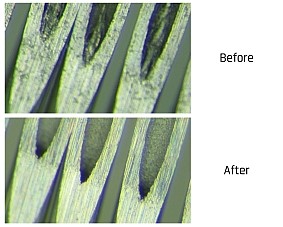
With a completely new development, acp systems sets new standards in the fully automated, dry deburring and cleaning of components made of metals and plastics. The innovative, inline capable quattroClean power technology uses recycled, liquid carbon dioxide as an abrasive processing medium. It is compressed inline into fine snow granulate, accelerated to supersonic speed by compressed air and blasted onto the surface to be processed. There, the granular CO2 unfolds four effects. The deburring effect is primarily based on the mechanical power of the impacting granulate and the brittleness of the burrs due to strong cooling. This is sufficient to reliably remove burrs from metal workpieces and machined plastic or injection-moulded parts in automated production lines. At the same time, particulate and film-like contaminants are removed from the surface.
acp systems AG, 71254 Ditzingen, Germany
(Press contact: Martin Dreher)
Phone +49 7156 480140, www.acp-systems.com
Hall 1, Stand 725
--> back
Laser-based, fully automatic robotic deburring of castings
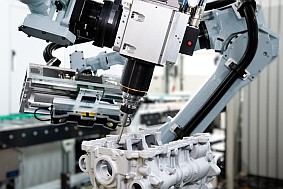
Casted aluminum parts, especially for the automotive industry, require high surface quality. Casting burrs, machining flashes or sharp edges are not acceptable at many applications. The Alpine Metal Tech deburring system ADoC is used for the fully automatic deburring of casted aluminum parts. In order to meet high quality and surface requirements, the system is equipped with an integrated inline measuring system with line sensors. As a result, component deviations as well as clamping and casting errors can be corrected from part to part and a constant deburring result is achieved. The deburring contour taught in a CAD/CAM system is recalculated in the cell based on the determined measurement data and a new robot program is created for the deburring robot.
Alpine Metal Tech GmbH, 4844 Regau, Austria
(Press contact: Eva Haidinger)
Phone +43 7672 781340, www.alpinemetaltech.com
Hall 1, Stand 515
--> back
Robot-based grinding, polishing and deburring
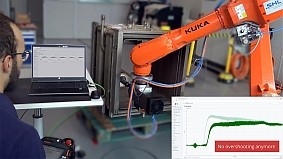
When finishing metal, plastic or composite parts, grinding, polishing and removing burrs is a common operation. As the components usually have complex geometries this processes are often done manually. Intelligent software solutions such as the ArtiMinds Robot Programming Suite (RPS) provide support in the robotic automation of tasks affected by tolerances. For example, it allows CAD models to be imported in order to automatically generate robot paths along the contour. This speeds up programming and leads to more accurate path planning. Another challenge in surface finishing is component and process tolerances. To ensure that the exact desired amount of material is actually removed at any time, the robot must be able to dynamically adapt and regulate its motion depending on the process forces that occur. ArtiMinds RPS facilitates the integration of the necessary sensors and the programming of the force-controlled sub-processes by means of already integrated interfaces and corresponding function blocks. In order to optimally adjust process parameters, the Learning & Analytics for Robots (LAR) analysis software can automatically monitor and visualize robot movements, sensor data and error codes.
ArtiMinds Robotics GmbH, 76131 Karlsruhe, Germany
(Press contact: Silke Glasstetter)
Phone +49 721 5099980, www.artiminds.com
Hall 1, Stand 412
--> back
Space-saving membrane filtration systems for bath maintenance
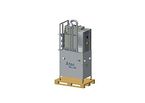 |
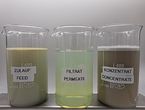 |
Cleaning tasks with aqueous media regularly face the following challenges: constant cleaning quality, long bath service life and limited space. To meet these challenges, Atec Automatisierungstechnik GmbH offers systems for bath maintenance and service life extension. The often optimal process technology for bath maintenance is membrane filtration, in which the plant manufacturer sets standards regarding quality, compactness, energy efficiency and automation of the filtration plants. The membranes specifically retain contaminants (oil, particles), while surfactants and cleaning chemicals remain in the bath. At DeburringEXPO, the company will present the Minitube, its most compact fully automatic membrane filtration system, which can also be easily integrated into existing systems.
ATEC Automatisierungtechnik GmbH, 89231 Neu-Ulm, Germany
(Press contact: Philipp Enderle)
Phone +49 731 9775910, www.atec-nu.de
Hall 1, Stand 720
--> back
Thermal deburring of different materials
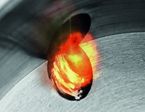 |
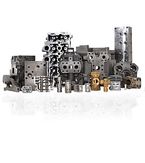 |
ATL Anlagentechnik Luhden will be presenting efficient solutions for the effective and fast deburring of sdemanding workpieces made of different materials such as metals, plastics and foams. The TEM process is particularly suitable for complex components with difficult-to-access drill branches and internal burrs. The thermal deburring process takes place in two phases: the ignition phase and the deburring phase. The heat required to ignite the burrs is generated exclusively by burning the fuel gas with oxygen. The more massive the burrs to be removed are, the more fuel gas-oxygen mixture must be introduced into the combustion chamber. Combustion of the burrs occurs when the heat generated is sufficiently high to cause ignition. The combustion of the material is self-sustaining as long as there is sufficient oxygen and there is no cooling due to excessively large cross-sections. Suitable fuel gases are methane, hydrogen or natural gas.
ATL Anlagentechnik Luhden GmbH, 31711 Luhden, Germany
(Press contact: Leon Trompell)
Phone +49 5722 992190, www.atl-luhden.de
Hall 1, Stand 301
--> back
Trolley for mass finishing
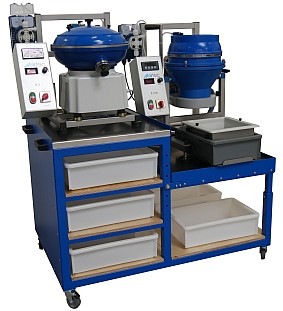
For its TE6HD, TE10HD and W10HD mass finishing systems, Avatec offers a matching "trolley" workstation. The machine, process media, separation and process fluid are well organized and quickly available. Equipped with solid handles and locking wheels, the trolley can be set up flexibly and safely anywhere with a space requirement of less than 1m². The design also allows the storage of abrasives in easy-to-handle plastic boxes and two 20-litre canisters for process and waste water. Ergonomic working conditions are ensured by the adjustment possibility of the machine working height adapted to the operator as well as an additional work surface for handling the workpieces. The trolley is an allrounder in the field of mass finishing equipment accessories. Whether small workroom or production island within a production hall, the trolley finds its place and is immediately ready for use.
AVAtec GmbH, 71063 Sindelfingen, Germany
(Press contact: Beate Haller)
Phone +49 711 68700760, www.avatec.de
Hall 1, Stand 404
Isotropic Superfinish for perfect surfaces
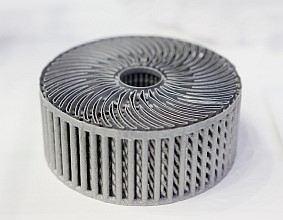 |
The Isotropic Superfinish makes it possible to obtain optimum results in terms of low surface roughness, increasing the functional performance of the component and its service life, while maintaining the geometry and dimensional tolerances. The results can be achieved with standard vibratory machines used with specific media and products. The machining media is selected based on the material and geometry of the workpiece to be treated. The latest updates of this technology also make it possible to process additively manufactured components and achieve excellent results. Moreover, with the development of innovative machine solutions, the possibility of finishing surfaces and internal channels, which represent a major challenge in this sector, has been created.tellen. Weiterentwicklungen der Technologie ermöglichen die Bearbeitung additiv gefertigter Bauteile.
Best Finishing Srl, 20060 Gessate (MI), Italy
(Press contact: Daniele Cataldo)
Phone +39 0295 384060, www.bestfinishing.it
Hall 1, Stand 304
--> back
Manual and automated deburring
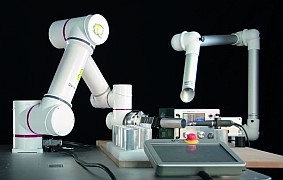
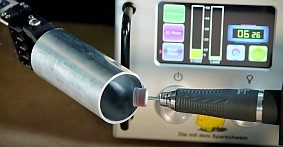
Botzian & Kirch will be presenting a comprehensive program for manual and automated deburring. The solutions for manual deburring include electric micromotors and pneumatic hand grinders, which are equipped with the appropriate precision tools depending on the task. The micromotors run extremely quietly at high speed and with very good concentricity. The company’s cobots are ideal for automated deburring. They are available in four different models that can be equipped according to the task at hand. All the solutions convince with simple operation and piggyback prices.
Botzian & Kirch GmbH, 51429 Bergisch Gladbach, Germany
(Press contact: Michael Randel)
Phone +49 2204 30660, www.diesparschweine.de
Hall 1, Stand 506
--> back
Automated deburring with consistently high part quality
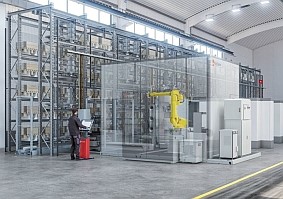
The RFC is a modular robotic cell for the automated deburring of different workpieces. Unlike workpiece-controlled finishing processes with a fixed number of spindles and thus limited selection of tools, this solution is designed for tool-controlled finishing. It offers a high degree of flexibility both in terms of the part mix (size, weight and geometry) and the number of tools provided. The robotic cell is available as a stand-alone solution or can be integrated into a Fastems flexible manufacturing system (FMS).
Fastems Systems GmbH, 47661 Issum, Germany
(Press contact: Maike Teuwsen)
Phone+49 2835 92440, www.fastems.com
Hall 1, Stand 221
--> back
Ceramic media for polishing
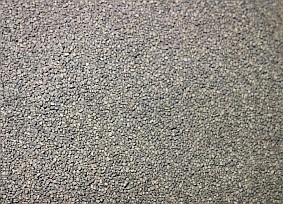
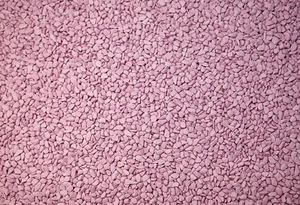
HPB ceramic media is a burnishing abrasive without “coloring”. They are sintered ceramic nuggets with exceptional properties. Due to its hardness, toughness and extremely fine crystal structure, it can be used on all types of ferrous metals, brass and aluminum. The media is mainly used for polishing applications in mass processing. It serves as a "burnishing abrasive" and provides additional benefits such as easy burr removal, radiusing, and serves as a driver for loose abrasives in cutting operations. The robust and hard crystalline structure of ceramic media makes it particularly effective for achieving a high gloss. It provides excellent results for giving parts a vibrant and polished appearance. The ceramic media is also an excellent alternative to steel media applications.
Henan General Machinery Import and Export Co. Ltd
Yuson Abrasive Finishing Tools & Polishing Machines Co., Ltd., Zhengzhou, China
(Press contact: Mr. Qiu Zhanbei)
Phone +86 1360 7668219, www.yusonfinishing.com
Hall 1, Stand 108
Brushes for various applications
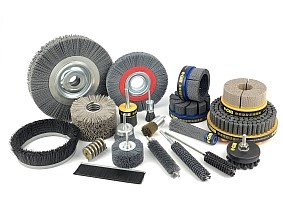
Huzhou Golden Industrial Brush offers a broad range of brushes, such as disc brush, flexible honing brushes, tube brushes, wheel brushes, and end brushes as well as spiral and coil brushes. The company’s products are widely used in the polishing, descaling, and deburring of metal components, cleaning, polishing, and oxidation cover removing of metal strips, trimming and rubbing of textiles, printed and dyed products and leather products, polishing, dusting and papermaking industry, cleaning, polishing, and deburring of PCB, cleaning of glass and LCD substrate, cleaning and rust removing of pipes, seal and dusting of furniture, inventory and mechanical equipment and so on.
In addition of lots of conventional products, the company also offers customized products for cleaning, polishing, and deburring in order to meet individual requirements.
Huzhou Golden Industrial Brush Co.,Ltd., Donglin Town, Huzhou 313002, China
(Press contact: Amy Lee)
Phone +86 572-2566850, www.brush-golden.com
Hall 1, Stand 706
The world's first V-shaped cutting edge: defined chamfering without secondary burrs
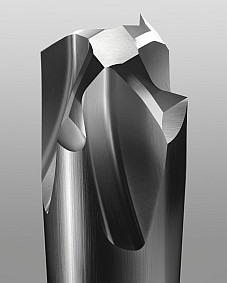
With the new "Burrless Chamfering Cutter" the chamfer cutter has been taken to a new level. The world's first V-shaped cutting edge completely avoids the formation of secondary burrs, eliminating the need for downstream deburring processes. The new tool also sets standards in terms of process reliability, accuracy and tool life. Kempf used the new chamfer cutter with great success with its first customers shortly after its market launch at the beginning of the year. In one customer application, a tool life of more than 10 times in stainless steel was achieved compared to the previously used chamfer cutters. After about 50 components, the tool used so far was already so worn out that a secondary burr was created. A single “Burrless Chamfering Cutter” then even machined the 550th and last component of this series without any secondary burr. In order to be able to cover as many applications and material groups as possible, the new chamfering cutter is offered in different versions, for example for non-ferrous metals, plastics, composite materials and even superalloys.
KEMPF GmbH, 73262 Reichenbach-Fils, Germany
(Press contact: Michael Minich)
Phone +49 7153 95490, www.kempf-tools.de
Hall 1, Stand 314
--> back
Automated deburring of gear components
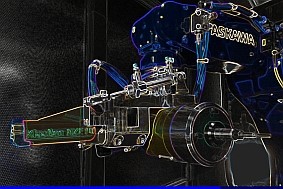
With the self-learning deburring robot, Klaaßen Werkzeugmaschinen und Automatisierungstechnik will be showcasing a world‘s first for the deburring of gear components. The solution, which has already been tried and tested, makes it possible to process a wide variety of gear geometries and dimensions through intuitive operation. No CAD/CAM programming is required. The deburring results and the high application flexibility set new standards in the field of deburring gear components. Users can thus forget their fear of contact with robot technology when it comes to deburring. The simple operation makes the solution ideal for both small and large series. The deburring robot will be on show live at DeburringEXPO.
Klaaßen Werkzeugmaschinen und Automatisierungstechnik GmbH
(Press contact: Steffen Kruck)
67117 Limburgerhof, Germany
Phone +49 6236 509980, www.klassen-gmbh.de
Hall 1, Stand 222
--> back
Technical brushes are extremely versatile tools in deburring technology
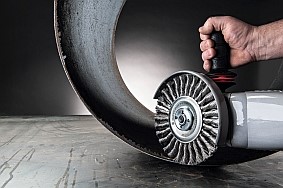
Technical brushes are one of the most flexible and often most economical methods of mechanical deburring technology. They offer manufacturers and processors of metal and polymer semi-finished products and components the possibility of removing burrs, rounding edges and removing tinsel, without the need for complex processes and systems. When selecting the most suitable tool brush for deburring, rounding or cleaning, the material, geometry and design of the filling material must always be optimally matched to the application. In principle, the choice of filling materials offers a great deal of scope for directly influencing the desired deburring result. Brush deburring provides metal and plastics processing companies a deburring process that can be used for workpiece weights of just a few grams as well as for components weighing several tons. It is also suitable for soft materials as well as for harder materials.
KULLEN-KOTI GmbH, 72766 Reutlingen, Germany
(Press contact: Tanja Frey)
Phone +49 7121 1420, www.kullen.de
Hall 1, Stand 405
--> back
Automate processes easily
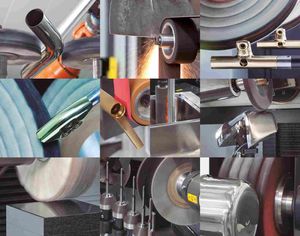
Mespa will be presenting efficient solutions for the effective automation of deburring, grinding, polishing, satin finishing and machining processes for parts made of metal and other materials. The manufacturer of robotic cells and special systems ensures the feasibility of the project through preceding process tests. This helps ensure that the company's automation solutions meet stringent dimensional accuracy and surface roughness parameters, while providing an optimal balance of productivity and profitability.
MEPSA Maquinaria Electrónica Esmerilado y Pulido S.A., Barcelona, Spain
(Press contact: Mercè Ribalta)
Phone +34 93 8202030, www.mespa.es
Hall 1, Stand 214
--> back
Professional repair of worn vibratory finishing tanks

The hemispherical tanks of vibratory finishing machines are usually cast with polyurethane to protect them from the abrasiveness caused by the process. And yet the ravages of time gnaw away at this protective coating, usually in the form of localized wear up to the point of striking the bare metallic substrate. A professional repair by Metaline is an economically and ecologically sound way to go. The first step is to determine whether the existing coating is still bondable and thus repairable. The company offers support for this and the right materials, application methods and adhesion promoters so that a repair can be carried out by oneself. If the protective coating is already grossly worn, infiltrated or full of holes, the question arises as to whether the "coating remnants" must be completely removed. After complete removal, the system manufacturer can cast in the new lining by means of his casting mold. For geometrically simple vibratory finishing drums (without flap ejection), a sprayed coating can alternatively be applied, for which Metaline has the material and the suitable spraying process.
MetaLine Surface Protection GmbH, 71157 Hildrizhausen, Germany
(Press contact: Peter Schramm)
Phone +49 7034 31000, www.metaline.com
Hall 1, Stand 213
--> back
Precise deburring with laser radiation
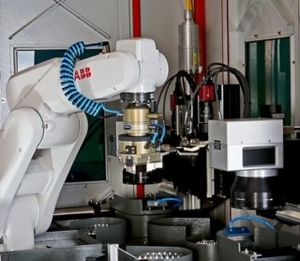
Compared to conventional techniques, the laser-based material processing shows various advantages which also help for the deburring of precision parts. In the high-precision manufacturing station Versacut, a laser beam removes burrs in one processing step. Neither tool wear nor deformation caused by mechanical forces occur using this non-contact method. High resolution machine vision and multi-color LED illumination support the various process steps. Device specific algorithms guarantee the flawless recognition of even complex structures with a precision in the micrometer regime. A XY scanner uses the data to guide the laser beam to the correct position and to handle any structures. Focus diameter and laser intensity can be adapted during the process to the respective task. A large variety of laser sources can be integrated. In most cases, the systems uses robust and maintenance-free lasers with pulse durations of several 10 ns and high repetition rates. Magazines, feeders, belts and robots allow for the full automation while exchangeable gripper units provide maximum flexibility.
nanosystec GmbH, 64823 Gross-Umstadt, Germany
(Press contact: Christiane Hummelt)
Phone +49 6078 782540, www.nanosystec.com
Hall 1, Stand 708
--> back
Electrolytic plasma polishing of metal parts
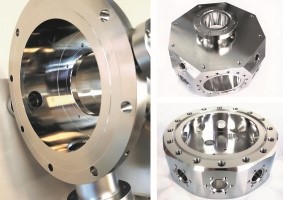
In plasma polishing, anodically poled metallic workpieces are moved into an electrolytic bath. The resulting gas wets the workpiece to be polished and a process-related plasma development occurs. Within the gas phase, electrolysis processes lead to homogeneous material removal. Compared to known electrochemical polishing methods, plasma polishing has important advantages. These include the levelling of micro-roughness in the range of 10 to 15, a very high degree of gloss with equally high geometric contour accuracy. The process does not require any pre-treatment or special cleaning of the workpieces, the surfaces are more corrosion-resistant compared to their initial state and no cytotoxic effects are to be expected on plasma-polished surfaces. The environmentally friendly electrolytes consist of 94 to 98 percent water, no use of highly concentrated acids, the pH value is 3.5 to 7.5.
plasotec GmbH, 14727 Premnitz, Germany
(Press contact: Tobias Weise)
Phone +49 3386 2127480, www.plasotec.de
Hall 1, Stand 613
--> back
Different ECM technology processes
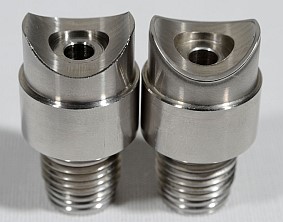
At DeburringEXPO, Stoba will be informing about the most diverse processes of ECM technology. Reasons for opting for electrochemical deburring include reproducible and safe removal of burrs on the workpieces to be machined. Secondary burrs on the relevant workpiece edges can thus be avoided. Classic examples are internal bore intersections or any workpiece geometries where targeted and defined material removal is required. The deburring process can be multiplied so that several deburring points as well as several workpieces can be deburred at the same time. The process time for pure deburring is approx. 15 seconds. Reliable monitoring of the deburring process for large batch sizes can also be added as an advantage, e.g. in conjunction with automation.
stoba Sondermaschinen GmbH, 87700 Memmingen, Germany
(Press contact: Christin Müller)
Phone +49 8331 984870, www.stoba-memmingen.de
Hall 1, Stand 505
--> back
Process-safe and energy-efficient deburring with ultrasound
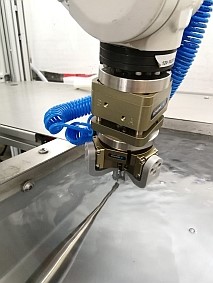
In the process developed by ultraTEC, components are stimulated by a generator. The high-frequency ultrasonic-horn oscillates back and forth 20,000 times per second over 0.1 millimetres. These generated vibrations move burrs and fibres back and forth until they are broken off, leaving sharp edges in a process-safe manner. Users can dispose of the processed water without any environmental concerns and further treatment. Compared with commonly used processes, ultrasonic deburring is the only process that can be carried out fully automatically and virtually independently of the material. The method is contact-free, energy-efficient in a process that can be validated. The targeted process enables selective deburring on individual edges or cross holes. The range of components that can be processed extends from micro parts for the optics or watchmaking industry, precision tools for machining and right through to 20-kilogram elements used mechanical engineering or vehicle construction.
ultraTEC innovation GmbH, 88471 Laupheim, Germany
(Press contact: Thomas Benzing)
Phone +49 7392 9286266, www.ultratec-anlagen.de
Hall 1 Stand 218
--> back
Improved product performance and service life
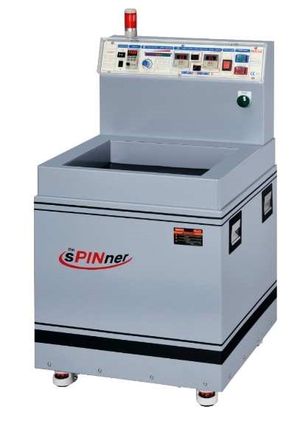
Optimized surface structures improve product performance and service life in many cases. However, burr-free bores and edges are often a particular challenge in production. Walter Krupp specializes in providing optimum support to companies in this area with high-quality honing equipment, cutting tools, machine tools and measuring accessories. Individual solutions enable high time and cost savings in production processes with uncompromising machining quality. One example of this is the spinner deburring and polishing machines, which are particularly suitable for machining small parts made of a wide range of materials. Due to the gentle process, this also includes precision parts. As an integrator with extensive process experience, the company provides customers with personal and holistic support from development to production.
Walter Krupp GmbH, 53340 Meckenheim, Germany
(Press contact: Natalia Richter)
Phone +49 2225 92010, www.wkd.de
Hall 1, Stand 105
--> back
Thread milling cutter for machining very soft materials
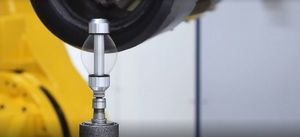
As a specialist for mechanical deburring, WMS-Engineering is constantly confronted with new challenges by customers. One of these was the machining of PU-foamed polyethylene components. The thin, flexible material overhang makes the use of conventional tools almost impossible. The company's solution: the thread milling cutter. The prototype - designed at the University of Tübingen - was further developed at the company and made ready for series production. A special feature is that the thread milling cutter can not only process very soft materials, but can also remove burrs from edges or surfaces. Thanks to its flexible shape, it adapts individually to any contour. The modular design allows different versions in terms of diameter and threads.
WMS-engineering Werkzeuge-Maschinen-Systeme GmbH, 79771 Klettgau-Grießen, Germany
(Presse contact: Malika Teuber)
Phone +49 7742 857570, www.wms-engineering.de
Hall 1, Stand 709